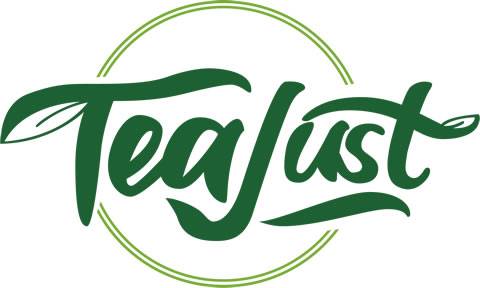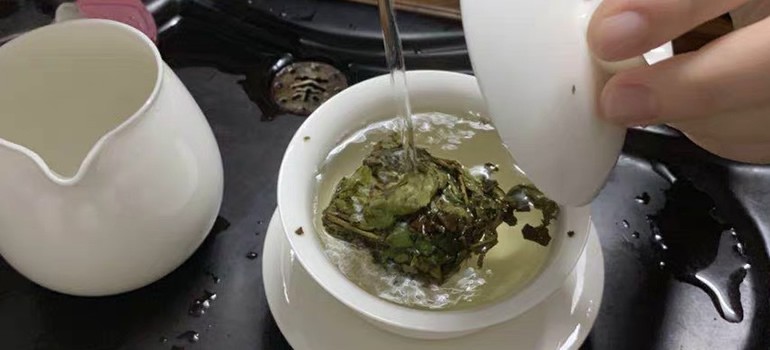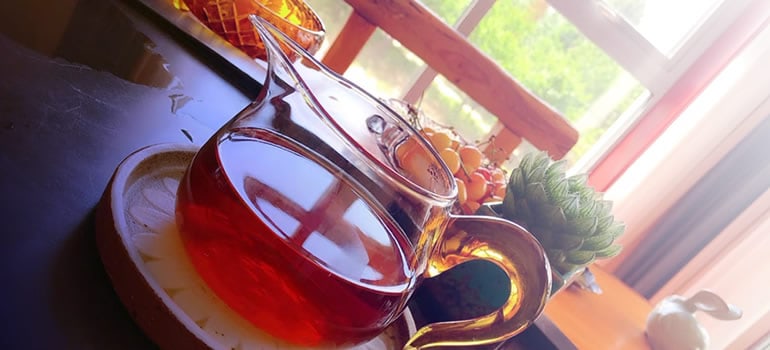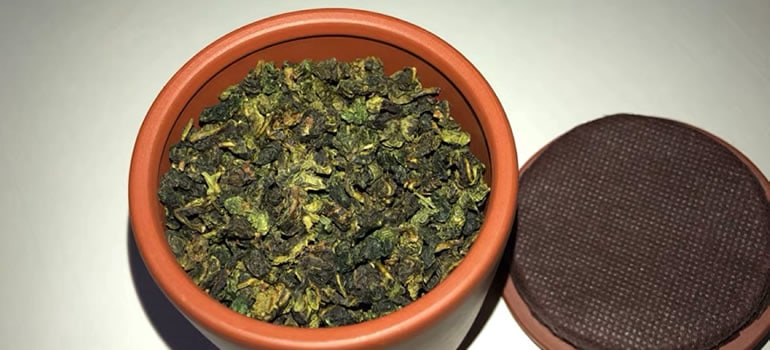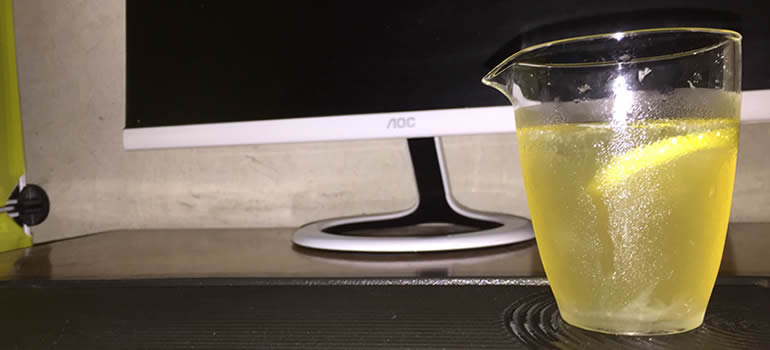If you enjoy drinking tea, I bet you have definitely heard about chai tea. The thing is this has become somewhat of a confusing topic.
Why? Well, chai tea is a little vague term, you may have also heard about masala chai tea, or just masala tea, or even about chai tea latte.
Chai tea, or simply chai, is commonly used for referring to a black tea with milk. Chai tea is different from masala chai tea, which is also black tea with milk, but it has a number of different spices added to it. Sometimes chai tea and masala chai tea are used interchangeably.
Luckily, things are not as complicated as they may seem. Below you will find all the information about what exactly is chai tea, its benefits, and, most of all, how to prepare it.
What Is Chai Tea?
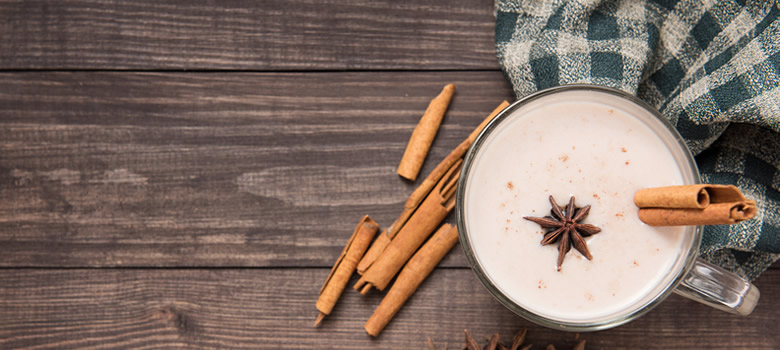
The original chai tea is dating back several thousand years. Its origin is almost shrouded in mystery as it is said that it was created between 5,000 to 9,000 years ago.
It originated in the territory of modern-day India.
It is rumored that one of the rulers back then asked for a healing beverage that follows the holistic principles in Ayurveda. As a result, several spices were added in some water. But there was no tea in the ingredients, so this interesting concoction was not exactly what one would call tea today. (It was also caffeine-free.)
1835 marked the arrival of the British, who went on and established black tea plantations in these areas. This led to the introduction of black tea to the local culture, and, eventually, it was used as an ingredient in chai tea.
Thus the modern chai tea we know today was born.
What Is the Difference Between Masala Chai Tea and Chai Tea?
Things get really interesting when we get down to the nitty-gritty stuff. Often I see people that use these terms interchangeably, which is not necessarily correct.
Technically speaking in India, the word “chai” means “tea”. In fact, even in Chinese and Arabic, the word for tea sounds very similar. So by saying “chai tea”, this means we are saying “tea tea”, which creates a little redundancy.
However, with time the word chai—as it got introduced to the Western culture—evolved and is now used for referring to the tea which has been prepared the same way it is commonly consumed in South Asia.
Today chai tea usually refers to (1) black tea with milk or (2) masala chai tea.
And masala chai tea, on the other hand, is a little bit different. It can be considered the original, which started it all. It is tea, usually black, with milk and spices.
In fact, the word “masala” means “spices” or more to the point a mixture—or paste—of spices. If you are wondering what kind of spices, worry no, I will talk a good bit about that below.
What Is the Difference Between Chai Tea and Chai Tea Latte?
To make things extra confusing, we also have another beverage called chai tea latte.
You already know that saying chai tea creates a redundancy, so the right term should be something along the lines of masala chai latte, masala tea latte, chai latte, or spiced tea latte.
So is there a difference between chai tea and chai tea latte? Both chai tea and chai tea latte are very similar, but they are not the same thing. Chai tea is prepared by adding spices and tea to water and milk while chai tea latte is prepared through adding concentrated tea and spices to steamed milk. (In a similar fashion to how latte is prepared.)
Because of that, chai tea latte may end up being more concentrated and with a lot foamier and frothier texture.
It is worth mentioning that not all chai tea lattes are created equal. Some coffee shops prepare it by using pre-brewing ingredients, which are of inferior quality, while other places may add too many sweeteners or sugar to it.
One of the questions that may pop up is how much caffeine is there in the chai tea latte?
Chai tea latte is prepared with black tea, which contains caffeine, so yes, it does have caffeine. The amount of caffeine in your chai tea latte will depend on how much black tea has been used, and it can vary between
between 50 to 170 mg per standard 8 oz cup.
Chai tea latte, due to its higher sugar content can be very high in calories. It can contain between 40 and 120 kcal per standard 8 oz cup.
What Spices Are Used for Masala Chai Tea?
Masala chai tea is prepared with at least four different spices at the very minimum. And although it can be made in many different ways and using different techniques there are a few staple spices:
- Ginger – Ginger is believed to stimulate digestion. It has a very spicy note.
- Black pepper – Black pepper is a good source of antioxidants. It provides your tea with another layer of extra spiciness.
- Cardamom – Green cardamom, in particular, is one of the usual suspects. It is a relatively expensive spice and has a very sharp, dominant flavor and vegetal notes. Black cardamom can also be used, which has smokier and muskier notes. It is believed that it has positive effects on the mood.
- Cloves – Cloves—yet another spice containing a lot of antioxidants—have strong, pungent and musky notes.
- Cinnamon – Cinnamon is a rich source of antioxidants. It adds warmth and a little sweetness to the tea.
- Anise – Anise is used for giving the tea a very mild, spicy, and slightly darker licorice-like flavor.
A lot of the people would actually add extra spices that they may have lying around their kitchen. (The number of spices can go up to 8 or even 10.)
The sky’s the limit here. Let your imagination go wild and experiment, but always keep things in moderation.
Other spices that you can be used for the preparation of chai tea are:
- Fresh mint leaves – Mint has a menthol-like, refreshing flavor that creates a very distinct cooling sensation.
- White pepper – White pepper is also very spicy, although compared to black pepper, it is usually milder and less complex.
- Coriander – Not everyone likes the taste of coriander. It usually has a mild lemon-like flavor.
- Salt.
- Holy basil – Basil has a very complex flavor profile. Some varieties of basil have very licorice-like flavors, while others may be reminiscent of mint or lemon. Other varieties can also be more bold and spicy, almost like cloves or anise.
- Fennel – It adds a mild licorice-like flavor, which is a little more spring-like.
- Lemongrass – Lemongrass has very gentle citrus-like notes that are almost reminiscent of lemon mint.
- Nutmeg – It has warm, nutty notes which are borderline spicy.
Chai tea can be prepared from scratch at home, and it can also be bought in some cafes. There are also premixed chai tea bags and concentrates that can be purchased.
It is true, you can get all of the necessary ingredients in an already crushed—powdered—form, but I recommend always using fresh ingredients and spices that you crush by yourself when possible. This adds more flavor and punch to your chai.
Although chai tea can be prepared with any kind of milk, if you want to follow the traditional recipes as much as possible, you should know that in India, buffalo milk is customarily used.
However, you can also use coconut oil or other nut oils if you do not consume dairy.
How to Store Chai Tea
If you happen to make a big batch of chai tea or chai tea latte, you can safely refrigerate it for a few hours. Just don’t forget to give it a good shake before use because some of the tea and spices may have settled down to the bottom of the container.
For the best results, store your chai tea in an airtight, opaque container.
The general rule of thumb is to not consume tea older than 8 hours (even when refrigerated) and especially if there are additional ingredients added to the tea like sugar or milk. Sugar, honey, or milk can significantly speed up the spoilage of the tea. Eventually, bacteria and mold will start growing in it, which could cause a number of health problems.
How to Make Traditional Chai Tea From Scratch
With such a long history, what you will find out is that chai tea can be prepared in many different ways.
- Cut or grate the ginger.
- Crush black pepper, cardamom, cinnamon, and a clove into powder.
- Add all the spices to a saucepan or a Turkish coffee pot.
- Pout in some water and let it simmer for 10 to 20 minutes.
- Add the black tea and let the tea simmer for an additional 5 minutes.
- When ready, strain the tea into a teacup and serve.
You can add milk depending on your preferences. This can be whole or skimmed milk, a sweetener, or nut milk.
How to Preparing a Stronger Chai Tea
Alternatively, you can do the following:
- Prepare the ginger by cutting or grating it.
- Crush the spices into powder.
- Bring into a rolling boil 2 cups of water.
- Add the crushed spices and let them boil for 1 minute.
- Add 4 tsp of black tea and continue boiling the tea for 1 more minute.
- Pour in the milk, about 3/4 of a cup.
- Bring the tea to a rolling boil again.
- The chai will start to rise and reach the top of the pot. When that happens, remove it from the stove for 1 to 3 seconds; that way, it will cool down. Then return it back on the stove and repeat that process 2 to 4 times. Be careful not to boil it over as it can happen really fast.
- When ready, strain the tea and serve.
The process explained in step 8 is known as Kadna technique. It is used to improve the flavor of the Chai. (A similar method can be found in the preparation of the traditional Turkish coffee.)
How to Make a Milkier Chai Tea Recipe
This method is great if you want to make a really milky chai tea.
- Mix water and milk in a 1:1 ratio and add the spices.
- Let the milk and water mixture simmer for about 5 minutes.
- Add the black tea and let the Chai simmer for another 5 minutes.
- Make sure to stir the Chai in order to prevent over steeping and to give it a better and milkier consistency.
- Once ready, strain the tea into a teacup and serve.
There are some variations that you can do if you want to see if different methods will taste better. For example:
- Bring the milk to a simmer (Don’t use any water, just milk.) add your tea and spices.
- Bring the water to a rolling boil, add the spices and tea and then add the milk.
How to Make Chai Tea Latte
Chai tea latte can be prepared in the comfort of your home. And what is more, it will be a lot better than what you would normally get from the majority of coffee shops.
The best tea for a chai tea latte is black tea. Ideally, you should be using loose leaf tea, which is, usually, of higher quality than the bagged options. You will be straining your tea anyway, so there really is no benefit of going with tea bags.
Alternatively, Ceylon tea, Assam tea, and certain tea blends like English breakfast can also be used.
There are two main parts of a chai tea latte that you need to prepare separately (1) the tea and (2) the milk. It is ideal to have a stove with at least two burners so that you can prepare both at the same time.
How to prepare the tea for the chai tea latte:
Serves: 2
Equipment: Wooden spoon and a pot or a saucepan.
Ingredients:
- 2 cups of water
- 1 tablespoon of loose leaf black tea (Use more or less depending on your preferences.)
- 1/2 teaspoon of green cardamom or 2 – 3 cracked green cardamom pods
- 1/2 teaspoon of ginger or a 2 inch thinly sliced ginger
- 1/2 teaspoon of nutmeg,
- 1/4 teaspoon of allspice or alternatively 1 teaspoon of whole black peppercorns
- 2 to 4 whole cloves
Preparation:
- In a small saucepan or a pot, mix the spices and toast them over medium heat for 2 to 4 minutes. Shake the pan and stir them with the wooden spatula until you can feel the fragrance from the spices.
- Add the water, including the ginger.
- Bring the mixture to a slight simmer and make sure to gently stir the spices and the water with a wooden spatula. Let the mixture simmer for 5 minutes.
- Add the loose-leaf black tea and remove it from the heat. Cover the and let the tea steep for 5 to 10 minutes.
- When ready, strain the tea into a cup (or into a pitcher). The ratio between the tea and the milk should be 1:1. Or in other words, half a cup of tea goes with a half of cup milk.
How to prepare the milk for the chai tea latte:
Ingredients:
- 1.5 cups of milk
- A pinch of cinnamon (According to taste.)
Preparation:
- In a saucepan, add the milk and a pinch of cinnamon and bring the milk to a boil. Keep stirring the milk.
- When the milk starts to boil slightly, remove it from the heat.
- Froth the milk. You can do that in several ways, with a whisk, a mixer, a blender, a frothing wand, an immersion blender, or even with a french press.
- When you achieve the desired consistency and texture gently, pour in the frothed milk to the tea and serve.
For everyone interested in sweetening up their chai tea latte, you can add a little brown or regular sugar, maple syrup, or a sweeter to your liking.
How to Make Iced Chai Tea Latte
There are two main methods you can make iced chai tea latte, by (1) cold-brewing it and by (2) hot-brewing it.
The cold brewing method is the slowest but also the easiest to do.
- Add the tea to the water and leave it to steep for anywhere between 4 to 12 hours.
- When the tea has reached the desired strength, the tea bags or tea leaves are removed.
- In a teacup, add ice cubes, pour in the tea, and top it up with milk.
The hot brew method can be used to make a more spicy iced chai tea latte, and it takes a lot less time to prepare.
Ingredients:
- 16 oz of water
- 16 oz of milk
- 30 grams of black tea or 6 tea bags
- 1 cinnamon stick
- 1 chopped star anise
- 5 to 10 chopped cloves
- 5 to 10 chopped cardamom pods
- 1/4 teaspoon of ginger
- 1 to 2 peppercorns
Preparation:
- Add the water, tea, and spiced to a saucepan.
- Bring the mixture to a slight simmer for 10 to 15 minutes.
- When ready, strain the chai concentrate.
- Leave it at room temperature to cool and refrigerate between 30 to 60 minutes.
- To serve, add ice to a cup of tea, pour in the chai tea concentrate, and top with milk in a 1:1 ratio.
For extra flavor, you can add one teaspoon of vanilla extract after the chai tea has been strained in step 3.
And if you want to make the iced chai tea latte a little sweeter, make sure to add 1 to 3 tablespoons of honey or sugar while simmering the chai tea concentrate in step 2.
When Is the Best Time to Drink Chai Tea?
In India it chai tea is traditionally consumed early in the morning. Although, that is generally speaking okay, there are a few considerations worth mentioning.
Chai tea is prepared, almost always, with black tea. So when considering the best time to drink chai tea, this inevitably involves the best time to drink black tea.
The best time to drink chai tea is in the morning after breakfast, at noon, or afternoon. It is best to avoid drinking chai tea in the late afternoon or at night before bed.
Chai tea should not be consumed on an empty stomach as it could lead to acidity and even stomach aches because of the strong spices and the black tea. This is why it is recommended to drink it about 30 minutes after you had your breakfast or lunch. With that being said, drinking chai tea in the morning is an excellent way to kick start your day as the caffeine in black tea will energize you.
On the other hand, chai tea should not be consumed in the late afternoon. The caffeine content in black tea can interfere with your sleep cycle and worsen the quality of your sleep, especially if consumed right before bed.
The best seasons to drink chai tea are the autumn and winter because this hot beverage will keep you warm and cozy.
Benefits of Chai Tea
It May Improve Alertness and Focus
The caffeine found in chai tea is a well-known stimulant that has incredible effects on the central nervous system. It has been shown to improve alertness, ability to focus, and even physical performance ( 1 2 3 4 5)
May Lower Cholesterol Levels.
Cinnamon, for example, is believed to be able to lower high blood pressure.
Some studies have found that black tea, which is primarily used for the preparation of chai tea, has a beneficial effect on cholesterol levels. (6 7 8)
Cinnamon can lower the total cholesterol level and LDL cholesterol and triglycerides by as much as 30%. (9)
May Lower Blood Pressure
Cinnamon, which is often used in chai tea, may be able to lower high blood pressure. (10)
In addition to that, although small, black tea showed potential in reducing blood pressure in one study.
May Improve Cardiovascular Health
Drinking three or more cups of black tea per day has been linked with a reduced risk of heart disease.
One study found very strong evidence that consuming at least three cups of black tea reduced the risk of coronary heart disease.
May Help With Weight Loss
Black tea, and tea in general, has always been considered helpful in shedding off the extra pounds.
One study found that black tea intake, which is found in chai tea, improved body fat distribution, and body weight over a three-month period.
May Improve Blood Sugar Levels
Since chai tea contains ginger and cinnamon, it may help in lowering the blood sugar levels. One study found that cinnamon may reduce insulin resistance and blood sugar levels by as much as 29%. (11)
And one study on ginger and its effects on blood sugar levels found that as low as two grams of ginger can lower blood sugar levels up to 12%. (12)
These numbers may look promising, but let’s not forget that chai teas and chai tea lattes that are bought from cafes often contain very high amounts of sugar, which will effectively negate all the potential health benefits of the spices mentioned above.
May Help With Nausea and Morning Sickness
Ginger is a well-known spice by all people, and especially pregnant women, that suffer from morning sickness and nausea.
One review of several studies found that as little as 1 to 1.5 grams of ginger was enough to lower the symptoms of nausea during pregnancy. (13)
May Help With Digestion
Drinking your chai tea after you have had your meal could help you jumpstart your metabolism and speed up the breakdown of certain foods.
It May Alleviate Pain and Aches
Many of the spices found in chai tea have potent antioxidant and anti-inflammatory properties; as a result, they can alleviate some aches and pains like headaches, migraines, and pain associated with arthritis, toothaches, and more. (14 15 16)
How Much Chai Tea Is Too Much?
A lot of foods, beverages, and spices can improve our health and strengthen our body, but anything that is not consumed in moderation can be harmful too.
So is that case with chai tea.
One of the main culprits here is black tea, which contains high amounts of caffeine. Indeed, the caffeine content in black tea is not as much as what you will find in a cup of coffee, but it can be very easy to go over the daily recommended amounts of caffeine.
According to the data provided by Mayo Clinic, black tea may contain, on average, 47 mg of caffeine per standard 8 oz cup of tea.
The upper limit for caffeine intake per day is about 400 mg, which is considered to be a safe number for the majority of healthy adults.
Thus it is not recommended to consume more than eight cups of chai tea. (17)
However, pregnant women and hypersensitive people should limit their caffeine intake to 200 mg per day or less. To find the safety ranges, a medical expert should be consulted before consuming any caffeine-containing beverage.
Chai tea latte, on the other hand, is a different case altogether. How much caffeine you will find in a cup of chai tea latte will vary a lot depending on the recipe and ingredients used.
For example, the small 8 oz chai tea latte from Starbucks contains 50 mg of caffeine, while the 12 oz iced chai tea latte has 70 mg of caffeine. (18 19)
Consuming too much caffeine has been associated with a wide variety of symptoms like jitteriness, difficulty sleeping, heart palpitations, headaches, anxiety. (20 21 22 23 24)
Another problem that some people may be facing when consuming too much chai tea or chai tea latte is that they may be consuming more sugar than they expect. For example, in the small Starbucks chai tea latte, you will find 21 grams of sugar and in the tall chai tea latte 31 grams of sugar.
“But how much sugar is too much?” you may ask.
According to the American Heart Association, men should not consume more than 36 grams of added sugar and women 32 grams per day.
Resources:
- https://www.quora.com/What-does-Masala-mean-in-Indian-cooking
- https://www.reddit.com/r/tea/comments/9adzc4/chai_tea_recipe/
- https://ratetea.com/topic/chai-tea-latte/88/
- https://www.starbucks.com/menu/product/466/hot?parent=%2Fdrinks%2Fhot-teas%2Fchai-teas
- https://www.huffpost.com/entry/what-is-chai-really_n_7560454
- https://www.freshcup.com/holy-basil/
- https://www.spiceography.com/nutmeg/
- https://www.spiceography.com/lemongrass/
- https://en.wikipedia.org/wiki/Coriander
- https://www.thespruceeats.com/what-are-cloves-995621
- https://www.thespruceeats.com/growing-and-using-mint-427618
- https://www.thespruceeats.com/about-white-pepper-694250
- https://thepioneerwoman.com/food-and-friends/8-ways-to-froth-milk/
- https://livesimply.me/homemade-chai-tea-latte/
- https://www.thekitchn.com/the-5-spices-you-need-for-homemade-chai-200440
- https://www.fda.gov/consumers/consumer-updates/spilling-beans-how-much-caffeine-too-much
- https://www.teasenz.com/chinese-tea/best-time-to-drink-black-tea.html
- https://www.ohhowcivilized.com/iced-chai-tea-latte/
- https://www.simplyrecipes.com/recipes/iced_chai_latte/
- https://www.joyfulhealthyeats.com/how-to-make-iced-chai-tea-latte-using-cold-brew/
- https://foodess.com/authentic-indian-chai-tea-recipe/
- https://www.reddit.com/r/tea/comments/2xqtwu/im_a_big_dumb_idiot_and_dont_know_what_im_doing/
- https://www.reddit.com/r/tea/comments/15auoz/hi_reddit_here_is_how_to_make_authentic_masala/
- https://imgur.com/a/80QQd#0
- https://www.reddit.com/r/recipes/comments/acu80e/authentic_masala_chai_tea_recipe/
- https://www.reddit.com/r/IndianFood/comments/b6ux03/need_help_making_chai/
- https://tea101.teabox.com/chai-or-tea/
- https://www.chaiandmighty.com/blogs/updates/what-is-the-difference-between-masala-chai-tea-and-chai-tea
- https://www.thespruceeats.com/the-history-of-masala-chai-tea-765836
- https://www.thespruceeats.com/masala-chai-spices-765207
- https://www.teatulia.com/tea-varieties/what-is-chai.htm
- https://www.reddit.com/r/tea/comments/5i6xg8/the_recipes_for_masala_chai_are_as_many_as_the/
